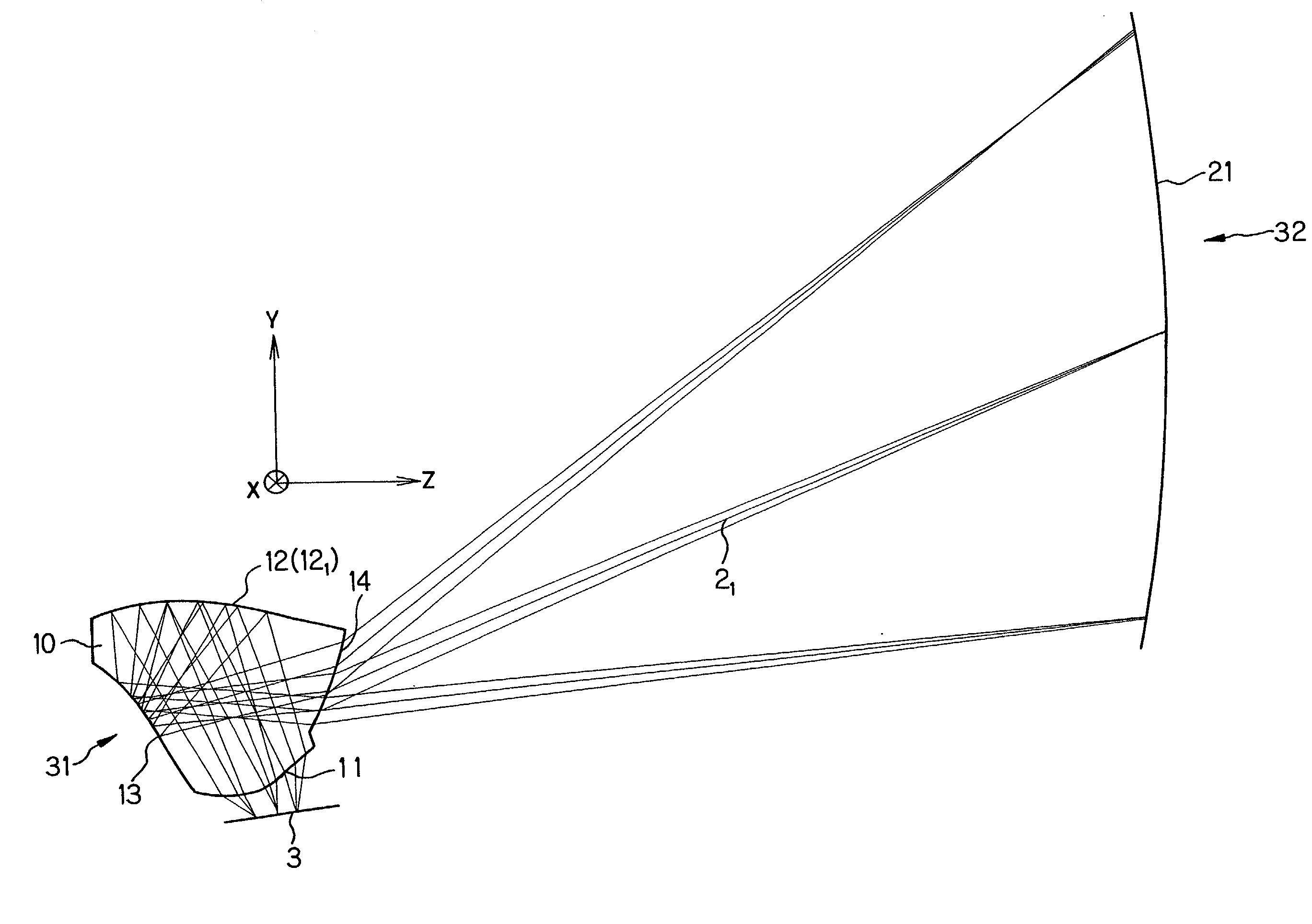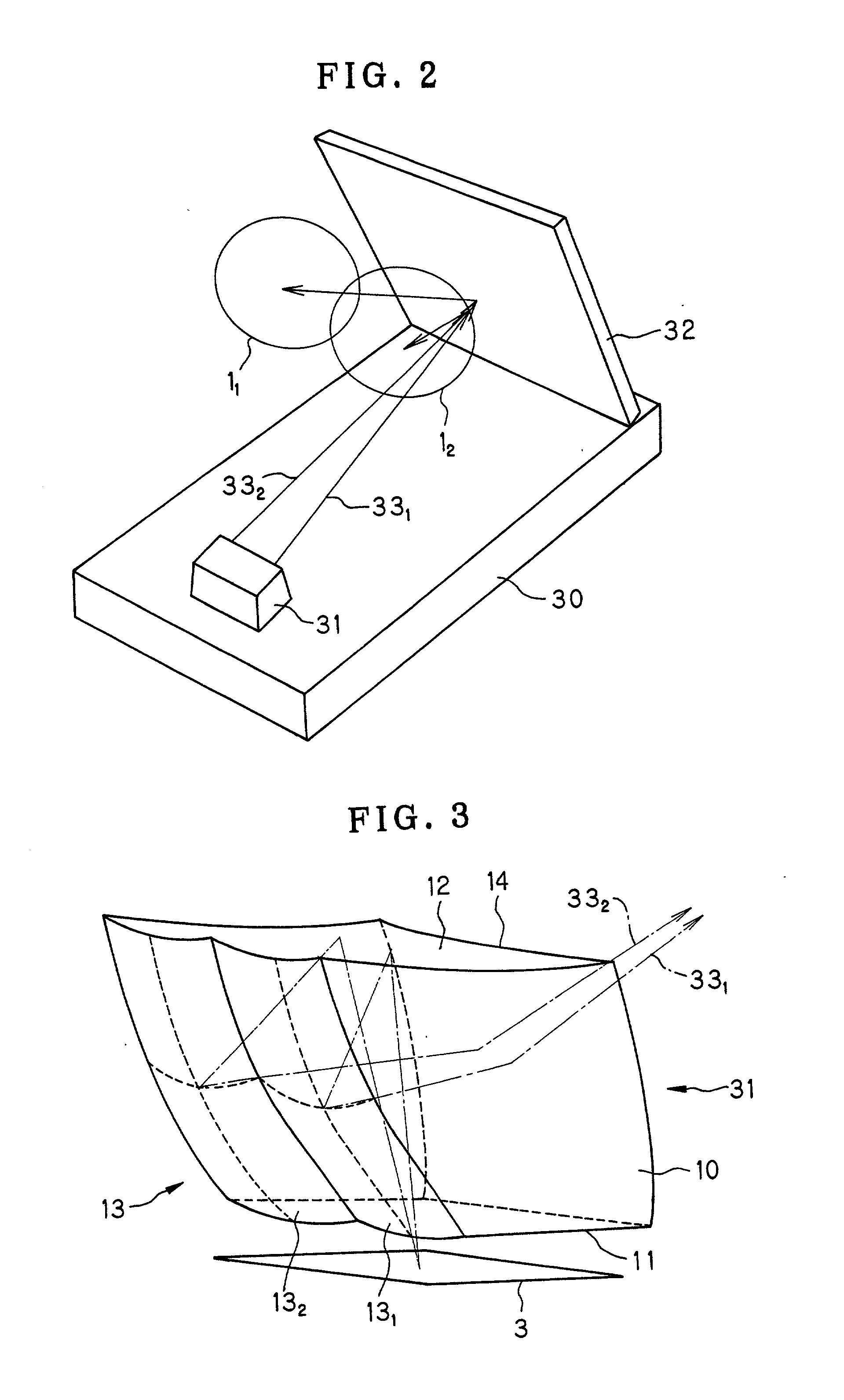Optical path splitting element and image display apparatus using the same
a technology of optical path splitting and image display apparatus, which is applied in the direction of optical elements, television systems, instruments, etc., can solve the problems of unfavorable wide field angle viewing optical system,
- Summary
- Abstract
- Description
- Claims
- Application Information
AI Technical Summary
Benefits of technology
Problems solved by technology
Method used
Image
Examples
example 1
7 Example 1 Surface Radius of Surface Displacement Refractive Abbe's No. curvature separation and tilt index No. Object .infin. -1000.00 plane 1 .infin. (Pupil ) 2 FFS{circle over (1)} (RE) (1) 3 FFS{circle over (2)} (2) 1.5254 56.2 4 FFS{circle over (3)} (RE) (3) 1.5254 56.2 5 FFS{circle over (4)} (RE) (4) 1.5254 56.2 6 FFS{circle over (5)} (5) Image .infin. (6) plane FFS1 C.sub.4 -4.3277 .times. 10.sup.-3 C.sub.6 -3.1324 .times. 10.sup.-3 C.sub.8 6.5334 .times. 10.sup.-6 C.sub.10 5.7777 .times. 10.sup.-6 FFS2 C.sub.4 3.5167 .times. 10.sup.-2 C.sub.6 -5.9257 .times. 10.sup.-2 C.sub.8 -4.5764 .times. 10.sup.-3 C.sub.10 -1.2743 .times. 10.sup.-4 FFS3 C.sub.4 -1.8901 .times. 10.sup.-3 C.sub.5 1.7416 .times. 10.sup.-2 C.sub.6 -5.5547 .times. 10.sup.-2 C.sub.7 3.1408 .times. 10.sup.-4 C.sub.8 -2.7604 .times. 10.sup.-3 C.sub.9 -2.6486 .times. 10.sup.-3 C.sub.10 1.3332 .times. 10.sup.-3 FFS4 C.sub.4 -1.9553 .times. 10.sup.-2 C.sub.6 -3.0093 .times. 10.sup.-2 C.sub.8 -2.4995 .times. 10.sup...
PUM
 Login to View More
Login to View More Abstract
Description
Claims
Application Information
 Login to View More
Login to View More - R&D
- Intellectual Property
- Life Sciences
- Materials
- Tech Scout
- Unparalleled Data Quality
- Higher Quality Content
- 60% Fewer Hallucinations
Browse by: Latest US Patents, China's latest patents, Technical Efficacy Thesaurus, Application Domain, Technology Topic, Popular Technical Reports.
© 2025 PatSnap. All rights reserved.Legal|Privacy policy|Modern Slavery Act Transparency Statement|Sitemap|About US| Contact US: help@patsnap.com



